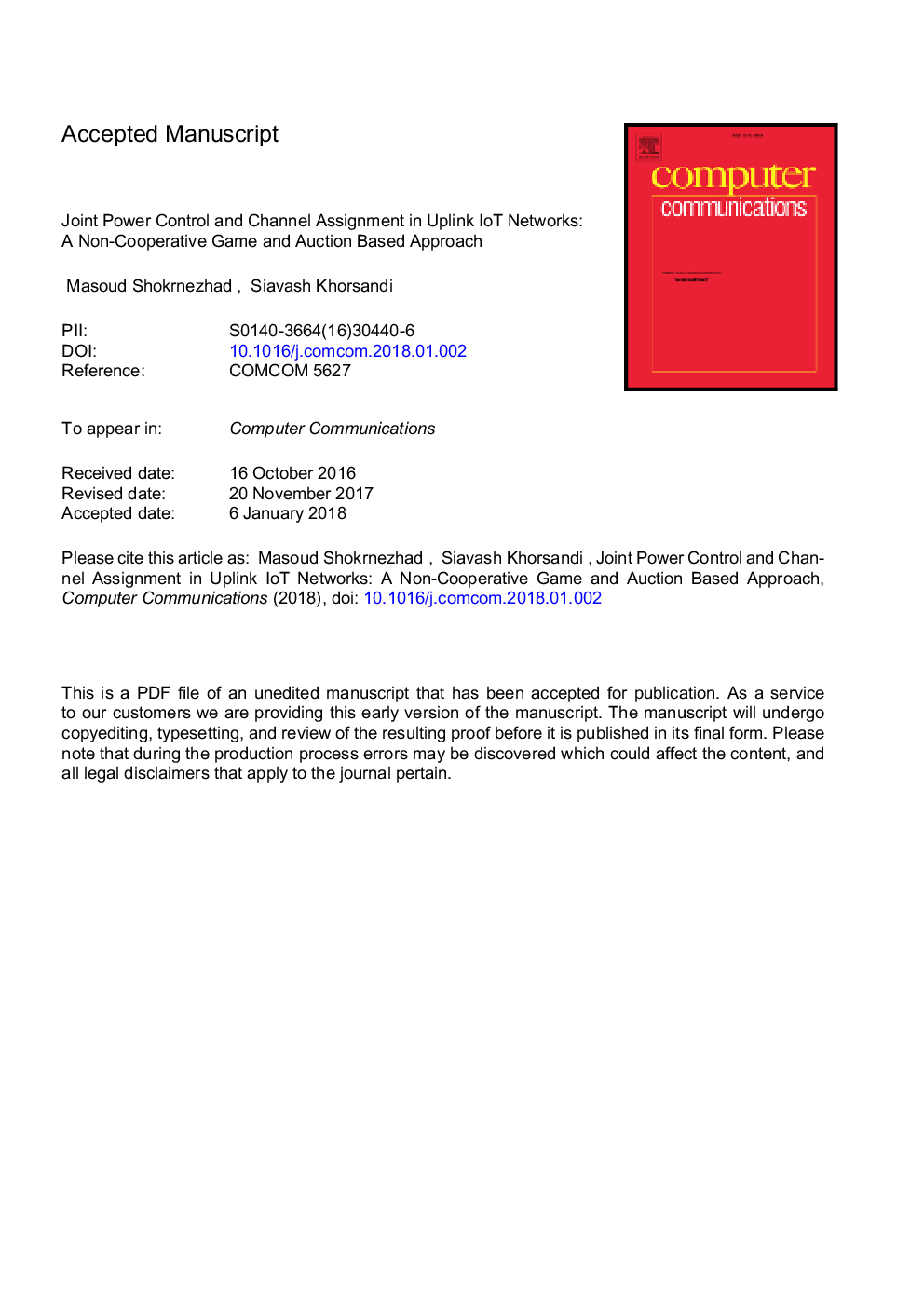| Article ID | Journal | Published Year | Pages | File Type |
|---|---|---|---|---|
| 6880077 | Computer Communications | 2018 | 22 Pages |
Abstract
Internet of Things (IoT) is a network of disparate objects enabled to exchange data with each other to implement smart applications. In near future, the possibility of a truly global IoT is expected to be covered by connecting billions of devices through emerging wireless systems such as the fifth generation of cellular networks (5G). Employing enhanced multiple access technologies and providing effective resource allocation schemes to maximize the number of supported devices is a highly important factor to make future networks practical. Most of the current researches consider Orthogonal Multiple Access (OMA) techniques and try to improve Quality of Service (QoS) metrics like the data rate. In this work, we investigate the problem of allocating resources in an uplink MCCDMA wireless IoT network, including channel assignment and power control, to satisfy the signal-to-interference ratio (SIR) requirement of all devices in a scalable manner. The problem is primarily formulated as a Mixed Integer Linear Programming (MILP) problem with the goal of maximizing the number of supported devices while the sum of transmit powers is minimized. We prove that the problem is NP-Hard in general, and use the Lagrangian relaxation and decomposition methods to provide a subgradient-based approach and find at least a near-optimal solution; yet in a homogeneous case where a same feasible SIR requirement and a same path gain are assumed for all devices, a closed-form solution is obtained. Towards an efficient solution for the general case, a centralized heuristic algorithm and an evolutionary distributed algorithm are developed. The distributed scheme consists of a Vickrey auction based channel assignment phase and a non-cooperative target SIR tracking power control phase to allocate resources in an iterative and decentralized manner. In the distributed scheme, the base station is not needed to know path gains. Numerical results show that the difference between the optimal solution and our proposed algorithms are negligible, so they can be efficiently employed in real-world scenarios.
Related Topics
Physical Sciences and Engineering
Computer Science
Computer Networks and Communications
Authors
Masoud Shokrnezhad, Siavash Khorsandi,
